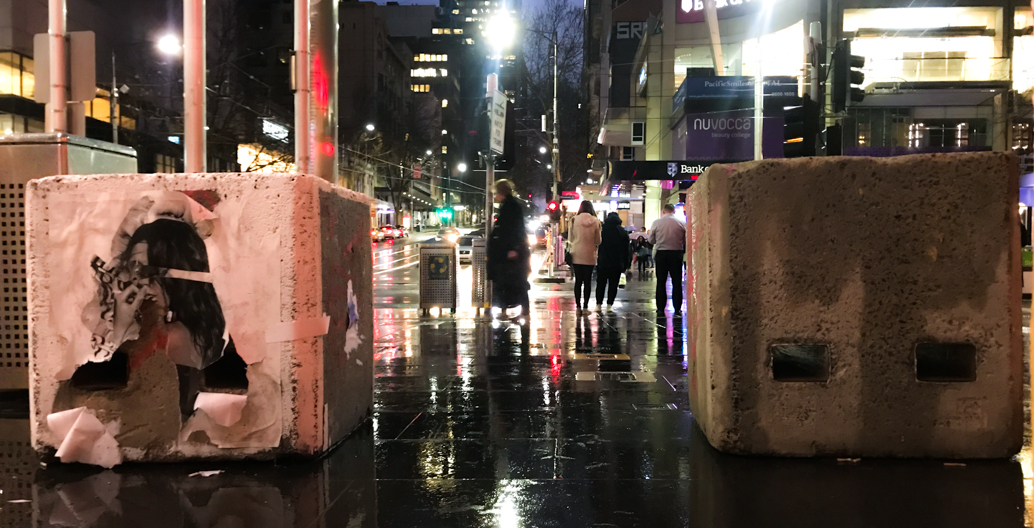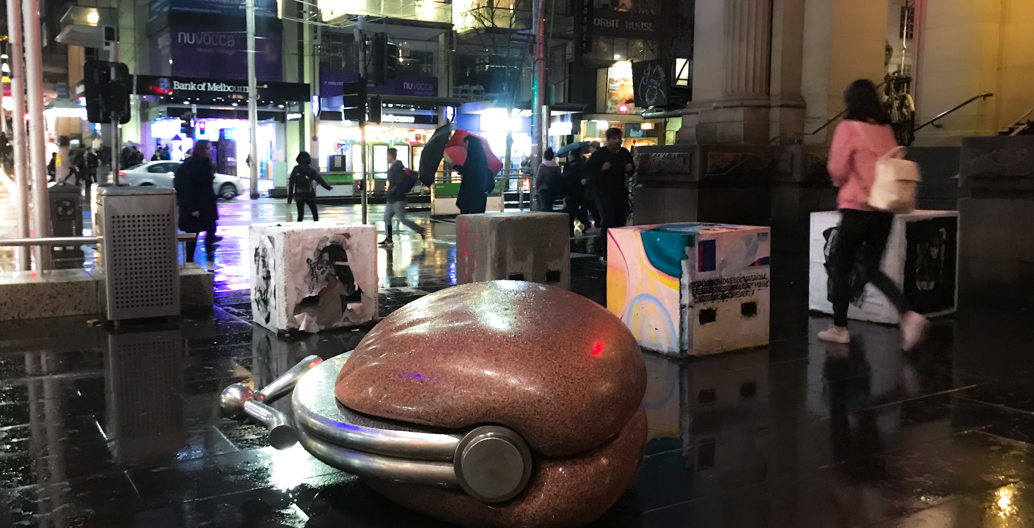
When bollards are not enough
After tragic instances of vehicle-based terror attacks hitting Western capitals, cities have looked to their concrete bollards for protection. But how do we prevent accessible public space from turning into ones of eternal vigilance?
The Australian government’s new strategy for protecting crowded places from terrorism draws heavily on other countries’ experiences of implementing similar strategies as part of a broader national counter-terrorism agenda.
The US and UK have had similar crowded places policies for a number of years due to persistently high threat levels. Places such as Abu Dhabi have adopted versions of such approaches and embedded security within large buildings and place-promotion programs.
Terrorists have significantly changed their modus operandi in the new millennium. Until 2001, vehicle-borne devices targeting major financial or political centres used to be the hallmarks of international urban terrorism. These have more recently been superseded by person-borne devices – especially suicide attacks – and subsequently Fedayeen-style mass shootings, targeting of crowds with fast-moving vehicles, as well as low-tech, difficult-to-defend knife attacks.
Consequently, traditional counter-terrorism approaches – the construction of defensive cordons to protect valuable and vulnerable assets – are seen as largely inadequate. Our defences have had to be rethought. Terror groups are adopting increasingly innovative methods and tactics aimed at soft targets and more generally crowded places, which cannot be countered without radically changing how citizens experience the city.
Like similar strategies elsewhere, the Australian government strongly emphasises partnerships between a range of stakeholders in providing protective security. Countering terrorism, the strategy notes, is “a responsibility shared by all Australian governments, the community and the private sector”.
A resilient crowded place has trusted relationships with government, other crowded places, and the public. It has access to accurate, contemporary threat information and has a means of translating this threat information into effective, proportionate protective security measures commensurate with the level of risk they face.
Learning from elsewhere – bollards are not enough.
Given the nature of the areas being defended, authorities have had to consider issues that previous attempts have paid limited attention to. Security stakeholders in Australia should bear these issues in mind as their program is rolled out.

Some of Melbourne's "bollart", including some paste-ups, are routinely susceptible to vandalism.

A close-up of Melbourne's lego-laden bollard on Bourke St Mall.

Melbourne's old and new public sculpture.

Unmarked bollards have been used to highlight pressing social causes.
What’s to consider when implementing defensive public space?
First, traditional security approaches may be of limited use against many types of possible attack and offer false comfort.
Many have advocated the use of crime-prevention ideas for dealing with the terrorist threat. These manipulate the built environment to reduce the attractiveness and physical access to target places while increasing the likelihood of being caught. In essence this means the mass use of security bollards and high-visibility policing.
While this might reassure many citizens, the emphasis on structures and deterrence models has limited use. Terrorists seeking martyrdom could simply move to other locations that are not as well defended.
Second, issues of risk and timing are really important. Here the Australian guidance has done something that other guidance often fails to do. It has provided a self-assessment tool.
This tool enables owners and managers of public spaces to assess their own risk (or pay a security consultant to do so). This is broadly a positive development, although it does raise the issue of whether or not such non-trained stakeholders feel comfortable doing this or have adequate skills and experience to do it effectively. Appropriate training courses and public awareness campaigns will be vital.
Third, a clear implementation gap is emerging in many countries in the prioritisation of locations that are protected. It is incredibly difficult to cost accurately for designed-in security. Hence a business case for measures that are solely associated with terrorism can be hard to build.
Developers are, in most cases, not legally obliged to adopt counter-terrorism measures. More often than not they will do so immediately after an attack. The cost and who pays for it is a huge issue.
Equally, who is responsible for implementation can be politically sensitive. Is it the government? Is it the owners of the crowded place? Is it the planning and urban design community?
London has ugly bollards too.
Some of them appear to be placed where they are near-useless. pic.twitter.com/XzThXjCn8I— Daniel Bowen (@danielbowen) 19 July 2017
The fourth issue relates to aesthetics. Over recent decades, urban revitalisation has increasingly emphasised inclusivity, liveability and accessibility. These “quality of life” values sit uneasily beside concerns to “design out terrorism” as security becomes part of the design process.
In the aftermath of attacks, or amid fear of imminent attack, obtrusive security features – notably temporary concrete or steel blocks – are commonly “thrown” around key sites to stop vehicle attacks. These are not necessarily aesthetically pleasing.
In the last decade the initial swathe of security bollards and defensive barriers that littered the landscape of many cities after 9/11 has slowly given way to subtler landscape alteration, although in many cases bollard-type solutions still prevail. The predominant view is that security features should be as unobtrusive as possible. This has led to security features being increasingly camouflaged and subtlety embedded within the cityscape.
What kind of public space do we want to live in?
How our public places are designed tells us a lot about the type of society we are and the one we wish to live in. In this sense, providing guidelines on protecting against terrorism in crowded places is a difficult task, especially in societies that value freedom of movement and expression but are seen as under threat of attack.
In Melbourne in June, concrete blocks were artistically decorated in the #bollart protestagainst what many saw as an unnecessary eyesore. The temporary security measures were put in place to prevent vehicle attacks following the Bourke Street incident and the London Bridge terror attack. In time, permanent steel barriers will replace the blocks.
More broadly, counter-terrorism measures deployed in crowded public places must seek to balance security effectiveness with social and political acceptability. We live in dangerous times, but how we react to the risk of terrorism will have impacts on our public realm for many years. In many ways the threat to cities comes as much from our policy responses as the actual act of terrorism. Both have the potential to harm the freedom of movement and expression that define a vibrant city.
Experience tells us that, once permitted, hyper-security tends to become permanent. If we want a humane and accessible public realm and a genuinely open society, we should not let the exceptional become the norm as we seek more adaptable and effective ways of coping, in a calm and measured way, with urban terrorism.
––
This article was first published via The Conversation.
Jon Coaffee is Professor in Urban Geography at the School of Politics and International Studies at the University of Wawrick. His research focuses upon the interplay of physical and socio-political aspects of urban resilience and he has also published widely, especially on the impact of terrorism and other security concerns on the functioning of urban areas. He is director of the Resilient Cities Laboratory (ResCity Lab) in PAIS, and the Warwick Institute for the Science of Cities (WISC) and an Exchange Professor at New York University’s Center for Urban Science and Progress (CUSP), and co-lead of the Wawrick’s Global Research Priority in Sustainable Cities.


